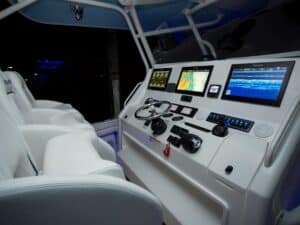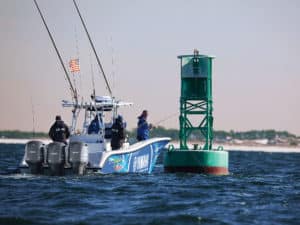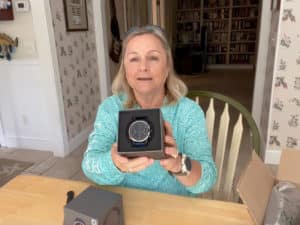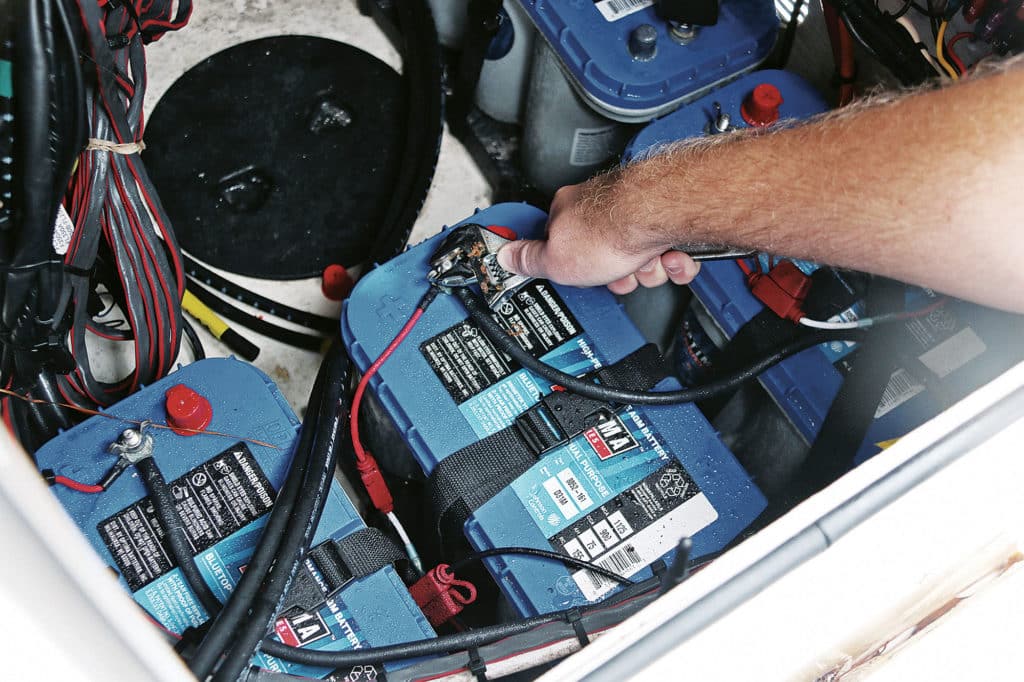
Marine batteries seem a little like wizardry to me: so much capability and design packed into a heavy, rectangular anonymous-looking package. But then chemistry and engineering never did light my candle.
Batteries represent the heart and blood of a vessel. Without them and their life-giving current flow, nothing moves, nothing happens. You might as well fish from a dock.
Boat dealers generally make it easy on buyers by recommending and installing the proper batteries in a new boat — batteries that meet the requirements of the engines and electronics aboard. But what if you buy a used vessel from an individual? What happens when your new-boat batteries eventually die? And what if you add a trolling motor, a shallow-water anchor or extra electronics?
According to West Marine and Optima Batteries, battery buyers should consider the following facts and rules of thumb.
Application and Number
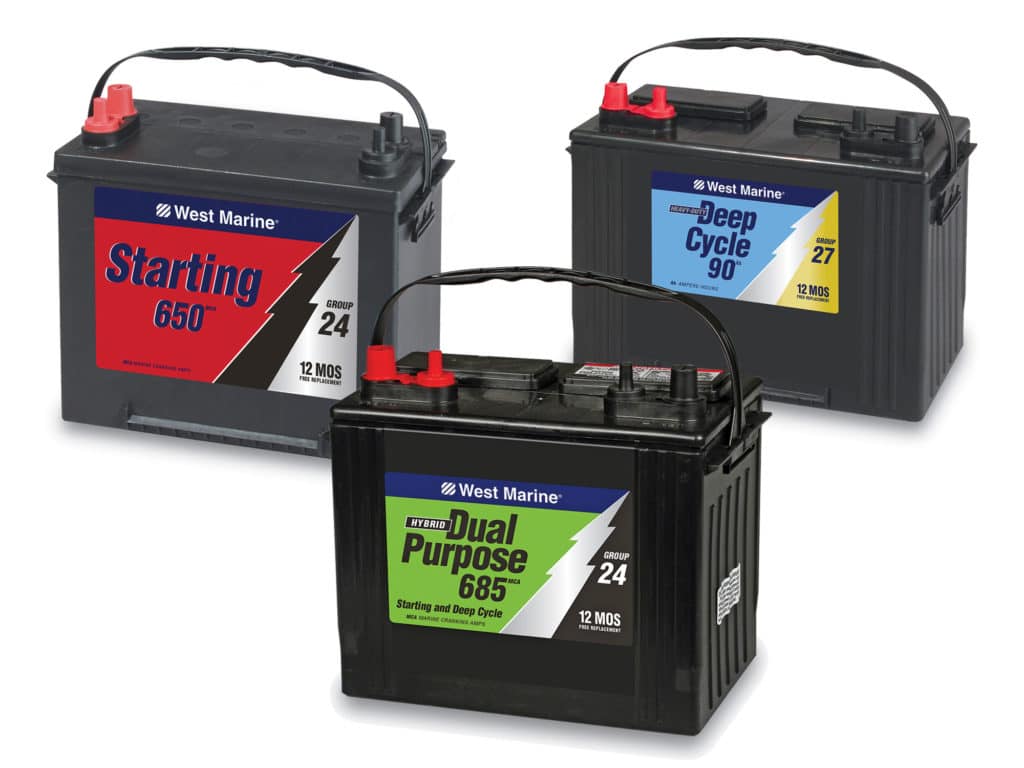
Most saltwater-fishing boats can get away with a starting battery: one that delivers a lot of amperage over a short period of time (up to 1,000 cranking amps or more for five to 15 seconds); and a house, or deep-cycle, battery: one designed to power the electric equipment aboard, one that’s capable of discharging much of its energy over the course of a day before recharging.
Another alternative: Install two dual-purpose batteries capable of starting the engines and running your electronics. However, a dual-purpose battery won’t do as good a job at either function as those batteries that are specific to starting or deep-cycling, says West Marine’s senior content editor Tom Burden.
Anglers who add a trolling motor will want to add additional house batteries. A 24-volt motor requires two deep-cycle batteries; a 36-volt system needs three. (Trolling motors can draw 5 to 30 amps per hour, based on their load, so battery experts agree that dedicated batteries — which can offer anywhere from 30 to 200 amp hours each — make sense.)
When adding batteries, consider where they can fit aboard your vessel based on space and weight distribution. Housing batteries beneath a center console keeps the weight concentrated and near the boat’s center of gravity. But sometimes space can be a limiting factor.
Battery size is denoted by a group number: group 31 starting battery, group 8D deep cycle, etc. “A group 51 is the smallest 12-volt automotive battery. We offer a group 27 marine battery, but it’s smaller than a group 31,” says Optima Batteries’ eCare manager Jim McIlvaine. “It’s a jumble of numbers.”
Bottom line: The numbers need to match. Don’t buy a group 31 battery to go with a group 27.
And while you’re matching, battery experts agree that boaters should replace all batteries aboard whenever one fails or whenever batteries must be added. “Batteries start dying as soon as they’re used. Internal resistance increases,” McIlvaine says. “When you mix them in with a newer battery, with lower internal resistance, it can get overcharged, while the older battery will get undercharged.”
Key Consistency
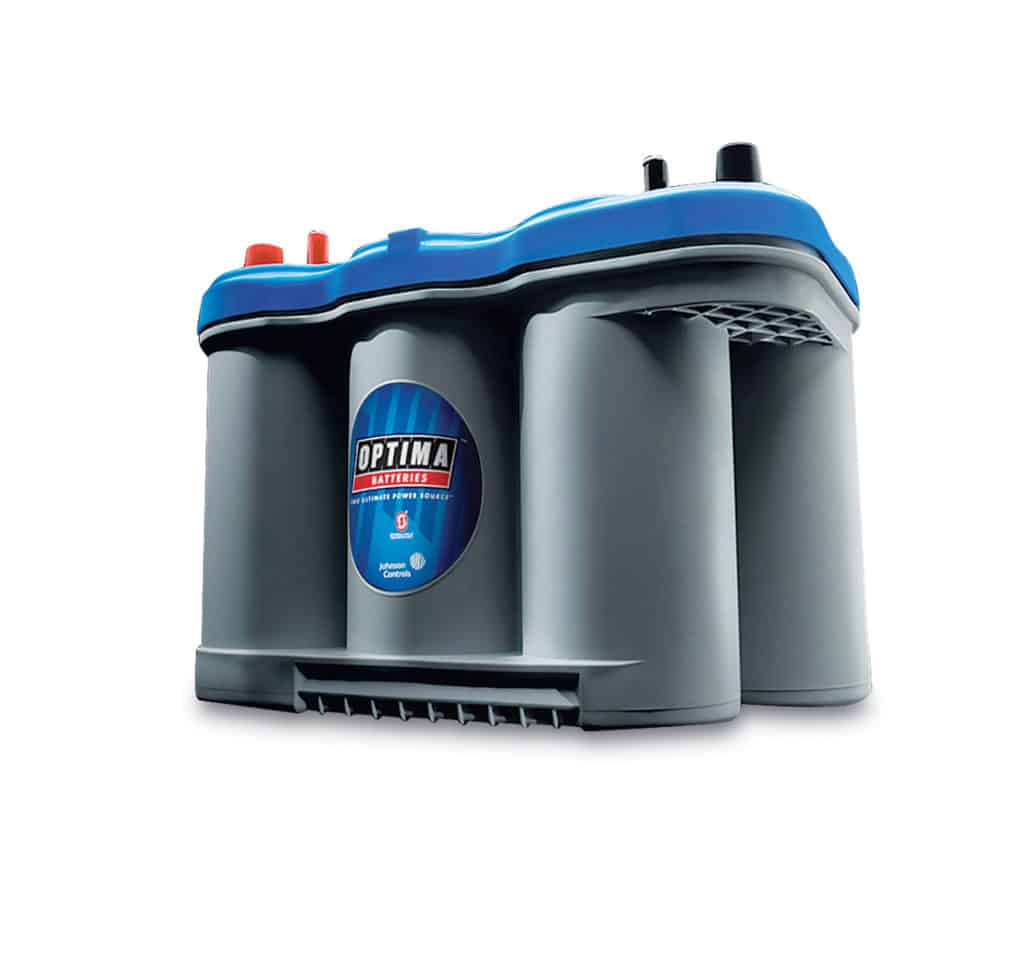
Technologies should match as well. West Marine sells five types of batteries: flooded lead-acid, gel, absorbed glass mat (AGM), thin-plate pure-lead AGM, and lithium-ion. Optima uses thin-plate pure-lead AGM technology solely.
The flooded lead-acid batteries — typical old-style car batteries — are not sealed and must be periodically topped off with distilled water. Flooded batteries generally cost less (starting at about $100 on westmarine.com), but they can spill if tipped.
These common batteries self-discharge at a higher rate than other kinds of batteries, losing about 6 percent of their charge per month, Burden says. They also stop delivering current once they drop from 12 to about 10½ volts, McIlvaine says.
Gel batteries start at about $160, come sealed, and can’t spill. They employ an acid gel stored between plates, and can withstand vibration better than flooded batteries.
Similar to gel but a step higher on the battery-evolution scale: AGM (starting at about $200). AGM batteries accept more voltage than flooded or gel batteries; they charge quicker and self-discharge at a low 3 percent per month, Burden says.
The main difference between gel and AGM, McIlvaine says: Within an AGM battery, the electrolyte is absorbed in fiberglass matting. In gel batteries, the electrolyte is suspended within the gel.
Unique Design
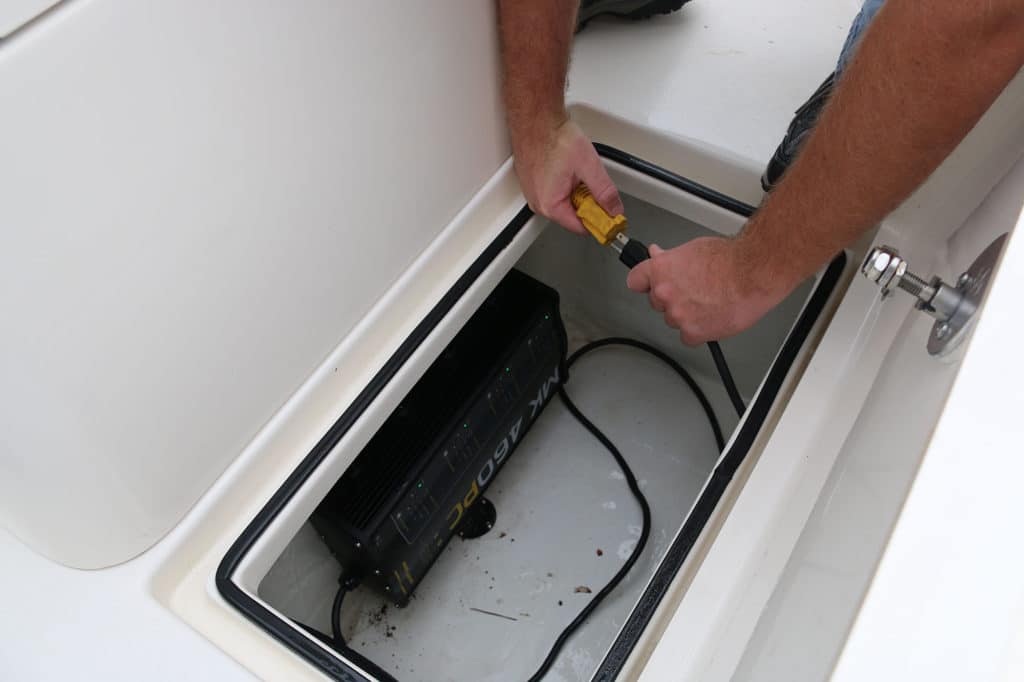
Optima uses a proprietary process called spiral-cell technology that it says delivers more power than conventional flat-plate batteries.
The company’s marine Bluetop Batteries start at $237 and resemble a six-pack of drinks. Each of their six lead plates is rolled into a spiral and padded by the soaked fiberglass mats.
The resulting battery also offers greater vibration resistance on and off the water — to withstand wave pounding and highway wear — and they weigh less than other AGMs.
Lithium-ion batteries (starting at $3,600 for a 180-amp-hour version) offer even higher performance and lighter weight, Burden says. They self-discharge about 1 percent per month.
“They’re smaller batteries that have more capacity, and they will allow you to discharge them to 100 percent,” he says. “But maybe 5 percent of our sales are for those types of batteries.”
Charge It
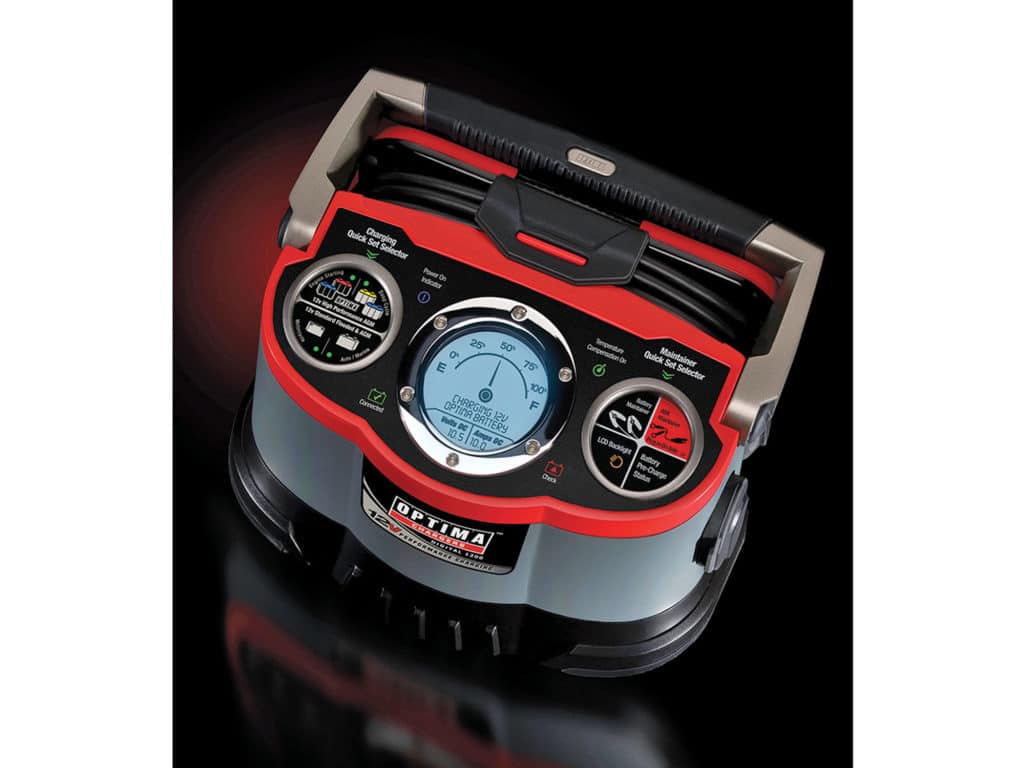
Batteries should last an average of about five years, but their function can be prolonged well past that period with proper maintenance and care. The first thing anglers should do after returning to the dock and cleaning their boats is to charge their batteries, says Edwin Evers, a B.A.S.S. tournament pro spokesman for Optima.
Evers uses Optima Digital 1200 chargers ($200), which put out 12 amps and can fully top off a battery in about seven or eight hours.
In general, boaters should insist on a multistage smart charger, Burden says. “It’s important to have a charger that charges in multiple stages.”
Proper Battery Staging
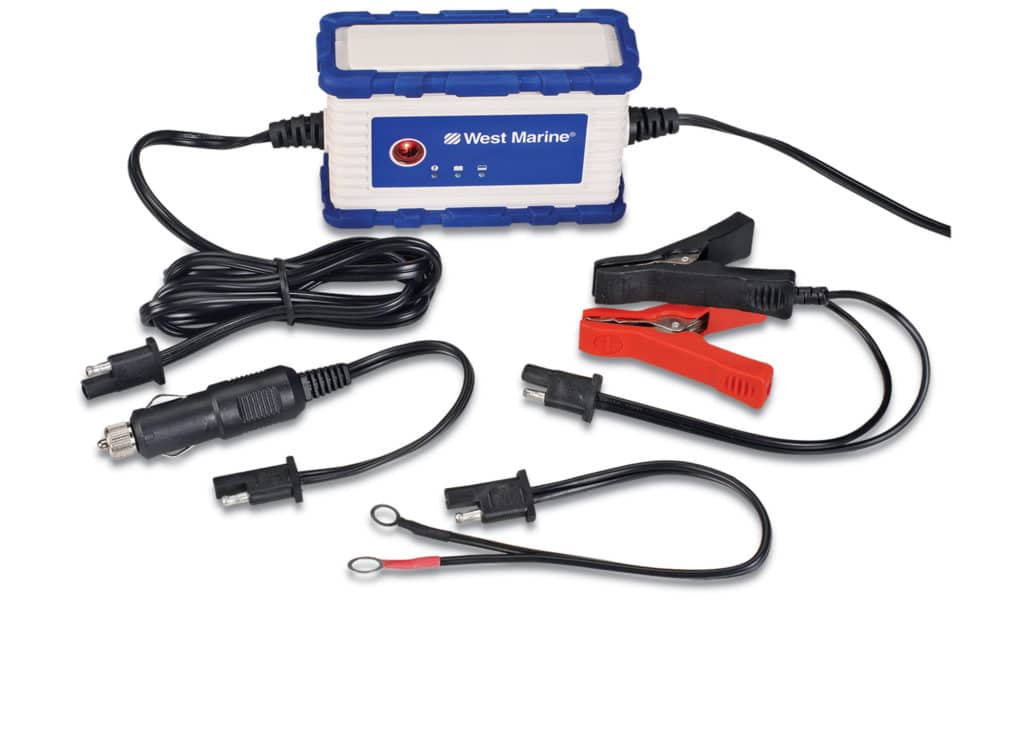
Stage one is the bulk stage: The charger delivers a higher number of amps — as much as the battery can take — to quickly load it up. Then comes the acceptance phase, which slowly takes the battery up to full charge; it’s followed by the float phase, which delivers a low level of amperage to maintain the charge.
“It’s better to keep batteries in a fully charged state,” Burden says. “You should put the boat away for the winter fully charged and keep it that way.”


